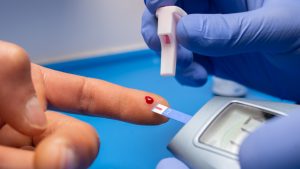Exercise plays a crucial role in managing blood sugar levels for individuals with diabetes, offering numerous benefits for overall health and well-being. In this article, we explore how regular physical activity positively impacts diabetes management, providing practical insights and tips for incorporating exercise into your daily routine.
Understanding the Benefits of Exercise for Blood Sugar Control
1. Improved Insulin Sensitivity
Regular exercise enhances the body’s sensitivity to insulin, allowing it to use glucose more effectively. This helps in maintaining stable blood sugar levels throughout the day.
2. Lowering Blood Sugar Levels
Physical activity helps muscles absorb glucose from the bloodstream for energy, thereby reducing blood sugar levels. Consistent exercise can lead to sustained improvements in diabetes management.
3. Managing Weight and Body Composition
Exercise aids in weight management and muscle building, which can improve insulin sensitivity and contribute to better blood sugar control.
Types of Exercise Recommended for Blood Sugar Management
1. Aerobic Exercise
Activities like brisk walking, jogging, cycling, swimming, and dancing improve cardiovascular health and help regulate blood sugar levels. Aim for at least 150 minutes of moderate-intensity aerobic exercise per week.
2. Resistance Training
Incorporate resistance exercises, such as weightlifting or resistance band workouts, to build muscle strength. Increased muscle mass helps in utilizing glucose effectively.
3. Flexibility and Balance Exercises
Practicing activities like yoga or tai chi enhances flexibility, balance, and overall well-being, supporting a healthy lifestyle alongside diabetes management.
Tips for Safely Incorporating Exercise into Your Routine
1. Consult with Your Healthcare Provider
Before starting any exercise program, consult with your healthcare team to ensure it aligns with your health status and medications.
2. Monitor Blood Sugar Levels
Check your blood sugar levels before and after exercise, especially if you use insulin or medications that lower blood sugar. This helps in understanding how your body responds to physical activity.
3. Stay Hydrated and Fuel Properly
Drink water before, during, and after exercise to stay hydrated. Have a snack handy in case of low blood sugar during or after physical activity.
Enjoy the Benefits of Exercise!
Exercise not only aids in managing diabetes but also improves mood, reduces stress, and enhances overall quality of life. Embrace physical activity as a positive step toward better health and diabetes management.
Other Blogs on Exercise and Blood Sugar Control
For more insights and diverse perspectives on exercise and its impact on blood sugar control in diabetes, consider exploring these blogs:
Healthline: Link to Healthline’s article on Exercise and Diabetes
Mayo Clinic: Link to Mayo Clinic’s advice on Exercise for Diabetes
American Diabetes Association: Link to ADA’s resources on Exercise and Diabetes
Verywell Health: Link to Verywell Health’s article on Exercise and Blood Sugar
These resources offer comprehensive information, expert advice, and practical tips for integrating exercise into diabetes management effectively.
E4 Helps you:
At E4, we’re dedicated to revolutionizing how people manage type 2 diabetes through our innovative E4 Alive program. Our team of specialists has joined forces to create a comprehensive solution aimed at empowering individuals to take charge of their health journey. With personalized support and resources tailored to each person’s unique needs, we make managing diabetes simpler and more effective than ever before.
E4 Alive offers a range of tools and resources to help you better understand and control your blood sugar levels. Our program provides personalized guidance to create a healthy eating plan and integrate regular physical activity into your daily routine. Plus, you’ll have access to a supportive community of individuals who understand your challenges and are there to offer encouragement and guidance every step of the way.
By joining E4 Alive, you can effectively manage your blood glucose levels, improve long-term glycemic control, reduce your risk of diabetes-related complications, and enhance your overall quality of life. It’s not just a program; it’s an opportunity to reclaim your health and vitality. Ready to start your journey to better health? Visit THIS PAGE to learn more about E4 Diabetes Solutions and the E4 Alive program.
To learn more about E4 Diabetes Solutions and the E4 Alive program, visit THIS PAGE.

Type 2 Diabetes: Is It Really Reversible?
A recent National Geographic article [link] explores how type 2 diabetes could be reversible with the right approaches. This condition, which affects millions of people worldwide, has long been considered a chronic and progressive disease. However, recent research challenges this perception and suggests that with lifestyle changes and the right approach, remission is possible. The

How Do GLP-1 Drugs Compare? A Breakdown of Ozempic, Mounjaro, and Trulicity
GLP-1 receptor agonists have revolutionized diabetes management, with drugs like Ozempic, Mounjaro, and Trulicity leading the market. But how do these medications compare in terms of effectiveness, side effects, and patient outcomes? Let’s explore their differences and what they mean for diabetes patients. Understanding GLP-1 Medications GLP-1 receptor agonists mimic a natural hormone that helps

Why Has Medicare Spending on Diabetes Medications Skyrocketed in 5 Years?
In the past five years, Medicare spending on diabetes medications has increased nearly fivefold, reaching $35.8 billion in 2023. This surge has been primarily driven by the growing use of GLP-1 drugs such as Ozempic, Mounjaro, and Trulicity. But what is behind this cost escalation, and how does it affect patients and the U.S. healthcare

The Gut Microbiota and Blood Sugar Control: A Hidden Connection
The human gut is home to trillions of bacteria that play a crucial role in digestion, immune function, and even metabolism. Recent research has revealed a fascinating link between the gut microbiota and blood sugar regulation, shedding light on how the balance of microbes in our intestines can influence diabetes risk and overall metabolic health.

The Dawn Phenomenon: Why Blood Sugar Rises While You Sleep
For many people with diabetes, waking up with high blood sugar levels can be frustrating—especially if they didn’t eat anything overnight. This early-morning spike in blood glucose is known as the Dawn Phenomenon, and it happens due to natural hormonal changes in the body. But why does it occur, and how can it be managed?

The Influence of Red Light on Blood: Can It Improve Diabetes?
Type 2 diabetes is a metabolic disease characterized by insulin resistance and elevated blood glucose levels. In the search for complementary alternatives to improve glycemic control, red light therapy has gained attention due to its potential to enhance circulation, reduce inflammation, and optimize cellular function. But what does science say about it? ✨ What is

